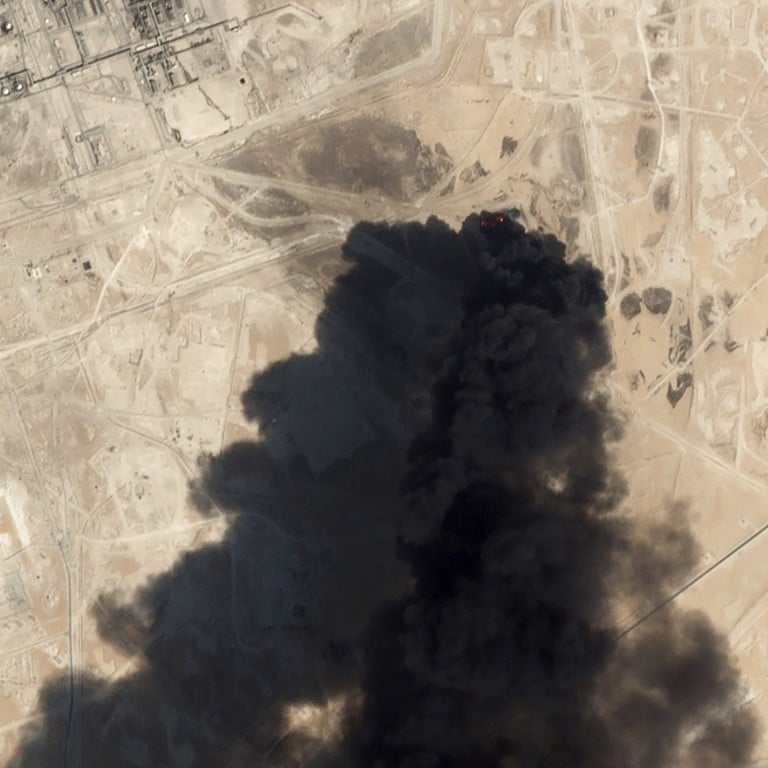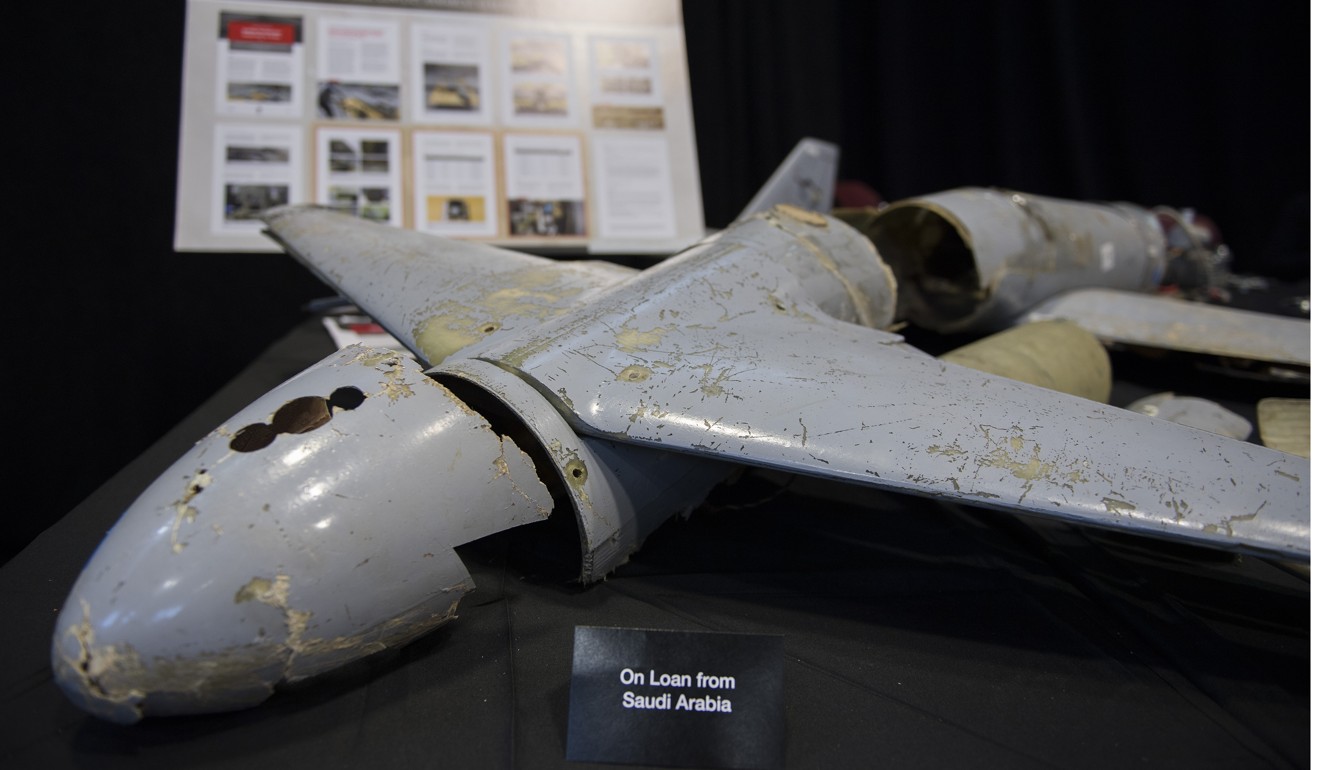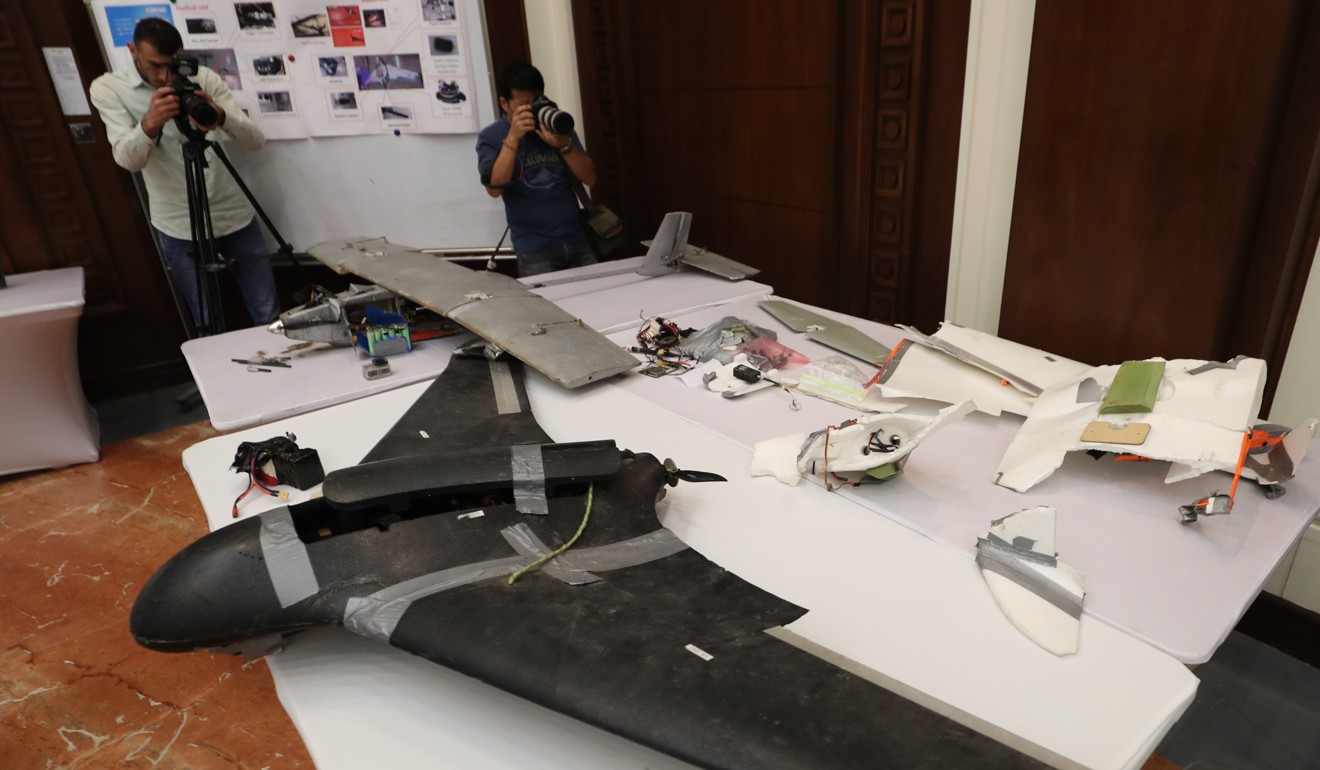
Saudi oil output halved as US blames Iran for ‘unprecedented’ drone attack on major facilities
- Donald Trump speaks with Crown Prince Mohammed bin Salman and offers ‘his support for Saudi Arabia’s self-defence’
- Drone strike was biggest attack on Saudi Arabia’s oil infrastructure since first Gulf war
US Secretary of State Mike Pompeo blamed Tehran for the destruction, calling it an “unprecedented attack on the world’s energy supply”, and refuted a claim of responsibility from the Iran-linked Houthi rebels in Yemen.
“Tehran is behind nearly 100 attacks on Saudi Arabia while [Iranian President Hassan] Rowhani and [Iranian Foreign Minister Mohammad Javad] Zarif pretend to engage in diplomacy,” Pompeo said in a tweet.
“There is no evidence the attacks came from Yemen.”
Iran’s foreign ministry on Sunday dismissed as “meaningless” the US accusations, suggesting they were a pretext to retaliate against the Islamic republic.
“Having failed at ‘max pressure’, US Secretary of State Mike Pompeo [is] turning to ‘max deceit’,” the foreign minister said in a tweet.
Foreign ministry spokesman Abbas Mousavi earlier said Pompeo’s remarks were “more like plotting by intelligence and secret organisations to damage the reputation of a country and create a framework for future actions”.
The ministry called the accusations part of Washington’s policy of “maximum lies”.
Earlier on Saturday the Houthi rebels said they launched a 10-drone attack, which would be among the rebel group’s most significant attacks on the Saudi kingdom.
The attack was biggest on Saudi Arabia’s oil infrastructure since Iraq’s Saddam Hussein fired Scud missiles into the kingdom during the first Gulf war.
War by remote control: Israel’s enemies Iran and Hezbollah challenge its drone superiority
According to Saudi state television, Saturday’s attack did not disrupt the kingdom’s oil exports.
However, The Wall Street Journal and US broadcaster CNN, citing unnamed sources, said the kingdom has reduced oil production by five million barrels a day, nearly half of the country’s entire oil output.
The attack caused fires at two facilities operated by Saudi state oil giant Aramco in the eastern province of Buqyaq, according to a spokesman for the Saudi Interior Ministry.
The fires were later brought under control, according to the Saudi official.

A military spokesman for the rebels said the attack was a “legal response” to an ongoing Saudi-led military campaign against them.
“We promise the Saudi regime that our next operations will expand and be more painful,” the rebel spokesman added, according to pro-Houthi television al-Masirah.
“The Saudi regime has no solution except halting aggression [in Yemen],” said the Houthi official.
Buqyaq, around 330km northeast of the Saudi capital Riyadh, is home to the world’s largest oil refining plant, according to Aramco.
Saudi Arabia is the world’s top oil exporter.
US President Donald Trump spoke with Saudi Crown Prince Mohammed bin Salman by telephone and offered his “support for Saudi Arabia’s self-defence”, a statement from White House Deputy Press Secretary Judd Deere said.

“The United States government is monitoring the situation and remains committed to ensuring global oil markets are stable and well supplied,” Deere said.
Prince Mohammed had earlier issued a statement saying the kingdom was “willing and able” to respond to this “terrorist aggression”, according to Saudi state media.
Martin Griffiths, the UN envoy for Yemen, condemned the attack as “extremely worrying”.
Prince Abdulaziz the first royal appointed as Saudi Arabia’s energy chief after minister’s sacking
He called on all parties to exercise restraint and to prevent further incidents, “which pose a serious threat to regional security, complicate the already fragile situation and jeopardise UN-led political process.”
Iraq denied the drones were launched from inside its territory. Prime Minister Adel Abdul-Mahdi issued a statement on Sunday saying Iraq would act “decisively” if anyone tried to use its land to attack other countries.
In recent months, the Houthis have stepped up their missile and drone attacks into Saudi Arabia.

Iran denies supplying the Houthis with weapons, although the UN, the West and Gulf Arab nations say Tehran does.
UN investigators said the Houthis’ new UAV-X drone likely has a range of up to 1,500km (930 miles). That puts the far reaches of both Saudi Arabia and the United Arab Emirates in range.
Last month, an attack claimed by Houthi rebels sparked a fire at Aramco’s Shaybah natural gas liquefaction facility -close to the Emirati border – but no casualties were reported by the company.
Rebel drones also targeted two oil pumping stations on Saudi Arabia’s key east-west pipeline in May, shutting it down for several days.
Yemen, one of the Arab world’s poorest countries, has been locked in a devastating power struggle between the Houthis and the Saudi-backed government since late 2014.

The Saudis fear that the Houthis will give their regional rival, Iran, a strategic foothold in the Arabian Peninsula.
The rebels currently control Yemen’s capital Sanaa and other parts of the country.
DPA, Bloomberg, Associated Press and Agence France-Presse
